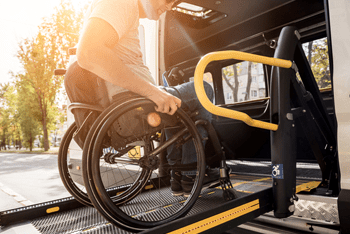
Mass Notification in Assisted Living, Nursing Facilities and Home Health
Effectively communicating with nursing staff on-site and off can dramatically improve patient care in nursing facilities, home health care and independent living environments.
Nursing facilities, senior living communities and home health services have become a hybrid industry over the years. With more and more senior clients and patients opting for independent living, day-to-day communication with care providers and other staff can be challenging. According to the National Center for Assisted Living, over 28,900 assisted living communities exist in the United States with nearly all providing 24-hour assistance and supervision.
Additionally, the Centers for Disease Control and Prevention (CDC) report that over 12,200 home health agencies operate in the U.S., servicing an estimated 4.5 million patients in 2015 alone. With more than 16.5% of the U.S. population aged 65-years and older, the need for nursing and assisted living services is certain to increase in the coming years.
When it comes to assisted living services, one must also consider people with disabilities who require support in daily living. The CDC estimates that 1 in 4 U.S. adults between the ages of 18 and 64 live with a disability. Congregate living facilities have become more popular in recent years, but independent living is still the more attractive option. For these clients, consistency in care is vital for daily living and rehabilitation efforts.
A mass notification system like Regroup can help healthcare providers accomplish a number of goals. Keeping operational costs in check, improving quality of care and staying resilient during crises are just a few of the benefits of having mass notification as part of an overarching communication strategy.
Internal and Staff Communications for Care Providers

Used for scheduling changes, COVID-19 procedures, policy updates, meeting notices, planned messaging or even alerts to IT or facilities issues, mass notification is the most effective way to notify large groups of people instantly. Regroup sends notifications in just two clicks (or taps from a mobile device), saving time when seconds count.
Critical Notifications and Automated Alerts
Crisis communications are important in the event of a disruption to operations or a more serious emergency. Keeping patients and staff safe during a crisis is the most essential responsibility of any facility or agency.
With Regroup’s flexibility, administrators can send critical notifications of power outages, fires, IT disruptions, COVID exposures, suspicious activity or other threats. In the case of off-site care providers, Regroup’s mobile app allows users to send a distress signal should a client need immediate assistance or in the case of other emergencies. Regroup delivers even when power is down and cellular towers are overloaded.
With Regroup’s National Weather Service (NWS/NOAA) integration, automated alerts are sent to the entire network when severe weather threatens. Used with mapping layers, specific regions can be targeted by geolocation and recipients alerted when they enter the affected area.
Conference Bridging for Collaborative Patient Care
Unlike some MNS providers, Regroup offers secure, end-to-end encryption for conference bridging. This allows healthcare professionals to securely collaborate with each other on patient care plans and other details — no matter where they are.
For caregivers in a home health environment, this makes communicating patient needs more secure and timely. Having the ability to collaborate in real time forwards the quality of care and ensures each patient or client receives team support in a faster way. And, since this method of communication is secured through Regroup’s cloud-based platform, caregivers can feel confident that they are maintaining patient privacy in their communications.
CMS Emergency Preparedness Compliance

Regroup helps healthcare organizations maintain a reliable network of communications during crises to assist facilities during emergency events, evacuations and more. Regroup can bridge communication gaps when logistical and staffing needs are impacted by events. This can make addressing patient needs a more orderly and successful effort during uncertainties.
Conclusion
Irrespective of the size of a nursing or home healthcare organization, patients, families and operations all benefit from a smart communication plan that addresses the needs of clients and patients, their safety and the operational resilience of the provider. Since traditional methods of communication can sometimes be unreliable in critical situations, it’s important for nursing and assisted living organizations to enhance their communication strategies with mass notification for critical alerts, everyday notifications and outreach.
Your Next Steps
We invite you to download our case study of VHA Home Healthcare. This quick read will show how one organization uses Regroup to keep patients and staff safe during emergencies and keep stakeholders informed at all times.
Ready to see more? You can schedule a no-obligation demo of Regroup’s powerful notification system here. |
Table of Contents
Categories
- Regroup Product Guides
- Disaster Recovery
- Employee Safety
- Routine Communications
- Mass Notification
- Critical Event Management
- Emergency Preparedness
- Corporate
- Insurance
- Business Continuity
- Business
- Education
- Uncategorized
- Nonprofit
- Healthcare
- Hospitality
- Government & Public Services
- Our Clients
- Awards
- COVID-19
- Safety & Preparedness
- Announcements